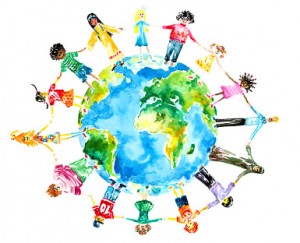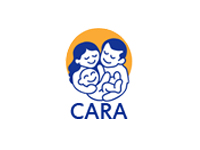In this blog post, Pramit Bhattacharya, a student of Damodaram Sanjivayya National Law University, writes about the legal framework of inter-country adoption in terms of international law. The post also explores the concept of transnational adoption from the Indian perspective.
Inter-country adoption, also known as transnational adoption is a mode of adoption in which an individual or a couple becomes the legal parent(s) of a child who belongs to a different nation. The couples who are looking to adopt a child belong to some other nation and they have to fulfill the legal conditions of both the countries, i.e. the country in which the potential adopters reside and the country to which the child belongs. Some countries have a proper system in place to go ahead with inter-country adoption while some nations forbid it.
Origin of Transnational/ Inter-Country Adoption
In the judicial pronouncement of Lakshmi Kant Pandey v. UOI,[1] the Apex Court stated that every child has a right to love and be loved. Only if a child is brought up in a family will he grow in an atmosphere of love, and secure moral and material security. But if it is not possible for the biological parents or anyone about look after the child, or if the child is abandoned by his/her family, then adoption of the child will be best for the security of the child.
The practice of inter-country adoption gained momentum around the mid-1940s to protect those children who became orphans in the World War II. It was in response to the plight of these children that the practice started.
At present, the receiving countries are the countries of Western Europe, Canada, and the United States. Factors such as higher rate of infertility and the increasing cost of infertility treatment provide an alternative to couples. The point to be noted here is that usually in the country of origin (or the giving country), an increase in population, extreme poverty, and poor economic system lead to the abandonment of children.[2]
The Legislative Framework – International Aspect
On the international front, the Convention on the Rights of the Child (CRC) deals with the matters of inter-country adoption. It is also regulated by the Hague Convention on the Protection of Children and Cooperation in Respect of Inter-Country Adoption, 1993 (the HC) and it has been ratified by about 90 countries.
Article 21 of the CRC puts an obligation on the adopting parents to ensure that the child who is being adopted enjoys the same level of standards and projection to those who are existence in the case of national adoption.[3] The CRC recognizes the importance of real parents and family in the life of a child and emphasizes on the fact that the State should assist them in safeguarding the rights of the child in case they are having any difficulty. Only when, despite such efforts, the child is suffering, that the concept of alternative care of the child comes into the picture.[4] Also, the way of transnational adoption should be opted only when the State is unable to ensure that the child cannot be cared for in a proper manner in the country of origin.
The Committee on the Rights of the Child, which ensures compliance with CRC has expressed their concern over violation of transnational adoption standards in many countries, and suggest that the Hague Convention should be ratified by these countries.
Hague Convention on the Protection of Children and Cooperation in Respect of Inter-Country Adoption, 1993
The Hague Convention lays down two principles, both towards the protection of the children who are the subject of international adoption- [5]
- Establishing of safeguards to ensure that transnational adoption is in the best interest of the child.
- To establish a system of cooperation between the contacting states to ensure that the safeguards are respected.
According to the Hague Convention, the system of cooperation is to be regulated by the Central Authority, who deals with the matter of adoption and serves as a principal agency for inter-country adoption issues with other countries. The Hague Convention also follows the subsidiary principle which states that transnational adoption can be adopted only when the safety of the child in the State of origin cannot be ensured, but first of all placement of the Child within the country of origin must be given the primary consideration.[6] Other guidelines which the Hague Convention sets out is to look into the fitness of the applicants/ adoptive parents, a restriction on private adoption, prohibition of contact between the adoptive parents and the real parents before the child has been pronounced adoptable by the Central Authority, and ratification of the Hague Convention by all the countries.
The Convention also ask the Central Authority to ensure that the child is mature enough and of proper age to be adopted, the child has been informed about the adoption and consequences of such adoption, the consent of the child has been taken (giving proper weight to the opinion and wishes of the child), and it has not been taken through inducement by compensation or payment of any kind.[7] The information of the child’s origin, his or her medical history, and information about the real parents of the child should be preserved, but access to such data should be restricted.[8] The monitoring of the Hague Convention is the responsibility of the Special Commission, which comprises all the signatories.[9]
Apart from the CRC and the HC, there are several other international instruments which protect the rights of the child in cases of international adoption. Some of these are European Convention on Adoption of Children, 1967, Inter-American Convention on Conflict of Laws Concerning the Adoption of Minors, 1984, and the European Convention on the Exercise of Children’s Rights (ECECR).
Adoption from Non-Hague Convention Countries
Despite the HC being in place, a majority of the countries are not a signatory to it and thus many transnational adoptions take place outside the Convention. The procedure in the countries which are not a party to the conditions is less strict. Considering this fact, the non-signatories attract more people who want to go for inter-country adoption. For instance, ICAs from Ethiopia has grown considerably in the recent times, allowing around 4500 adoptions to the US in 2009-10.[10]
Adoption Laws in India
India is signatory to both, the CRC and the Hague Convention. The primary law which relates to the issue of adoption under the Hindu System is the Hindu Adoption and Maintenance Act, 1956 (HAMA).
The Juvenile Justice (Care and Protection of Children) Act, 2000 and all the Amending Acts (2006, 2010, and the latest being in 2015[11]) guarantee those rights to an adopted child which are recognized under the Hague Convention. The 2000 Act did not, however, define adoption, and the term was added in the 2006 Amendment. This was a major development as up till adoption by a non-Hindu was guided by the Guardians and the Wards Act, 1890.
Concept of Inter-Country Adoption in India
In the case of In Re Rasiklal Chhaganlal Mehta,[12] the issue of transnational adoption was first discussed by the court, which held that adoption under Section 9 (4) of the Hindu Adoption and Maintenance Act, 1956, inter-country adoption is legally valid. In the case of Laxmi Kant Pandey v. Union of India,[13] the Apex Court formed some guidelines which were to govern international adoption. Setting up of a Central Regulatory Body was suggested and in pursuance of the suggestion, Central Adoption Resource Agency (CARA) was set up in 1989. The agency plays a pivotal role in laying down both substantive law and procedural law on intra-country and inter-country adoption.
In the judicial pronouncement of Craig Allen Coates v. State through Indian Council for Child Welfare and Welfare Home for Children,[14] it was stated that if the adoptive parents fail to give proper reasons and motive for adopting the child from another country, then the adoption wouldn’t be allowed.
One of the issues which crop up in transnational adoption is finding suitable potential parents for the child. In the case of Karnataka State Council for Child Welfare v. Society of Sisters of Charity St. Gerosa Convent,[15] the Supreme Court was of the view that finding Indian parents for adoption should be preferred so that the child grows up in an Indian surrounding and retain their heritage and culture.
Central Adoption Resource Authority (CARA)
CARA is an autonomous body which has been set up under the Ministry of Women and Child Development and looks after matters of intra-country and inter-country adoption. CARA Guidelines state that any foreign couple who wants to adopt a child from India must be sponsored by a child welfare agency or a social agency which is recognized by the government of the country in which the foreign couple resides.
CARA Guidelines also states that intra-country adoption is preferred first. As per CARA Guidelines, only three type of children is recognized as adoptable.
- Those children who have been surrendered.
- Those who are abandoned.
- Those who are orphans and are under the care of some specialized adoption agency.
Problems Arising in Case of Inter-Country Adoption
Child Trafficking
In many cases, the child becomes the victim of human trafficking. Children are sold after being taken out of the country by providing false information about the child and forging documents.
Post-Adoption Negligence
In transnational adoption, post-adoption monitoring is extremely tough and hence the child may be prone to negligence by the adoptive parents.
Post-Adoption Identity Problem
In cases of transnational adoption, the adoptive parents have to take the child out of the country as guardians and then complete the adoption procedure of their country too. The situation becomes very bad if the guardian does not turn out to be the adoptive parents of the child.
Concluding Remarks
Transnational adoption is a very good way to start a new life, for both the child and the adoptive parents. But if there is no proper structure to follow up the adoption, the violation of the rights of the child is sure to take place. India also needs better guidelines and laws to deal with intra-country adoption. It is important that the security of the child is not only ensured within the country but also when he goes out of the country after being adopted.
Footnotes:
[1]1984 AIR 469, 1984 SCR (2) 795
[2]D. Howe, P. Sawbridge, and D. Hennings, “Half a Million Women”, New York: Penguin, 1992.
[3]Convention on the Rights of the Child, Article 21(c).
[4]Convention on the Rights of the Child, Article 20.
[5]Hague Convention, Preamble and Article 1.
[6]Hague Convention, Article 4.
[7]Hague Convention, Article 4 (d)
[8]Hague Convention, Article 30
[9]Special Commission on the Practical Operation of the Hague Convention of 29 May 1993.
[10]https://travel.state.gov/content/adoptionsabroad/en/about-us/statistics.html, http://www.lawctopus.com/academike/inter-country-adoption/
[11]http://trackthemissingchild.gov.in/trackchild/readwrite/JJAct_2015.pdf
[12]AIR 1982 Guj. 193
[13] Supra 1
[14]162(2009) DLT 605
[15]ILR 1991 KAR 3543
 Serato DJ Crack 2025Serato DJ PRO Crack
Serato DJ Crack 2025Serato DJ PRO Crack















 Allow notifications
Allow notifications



